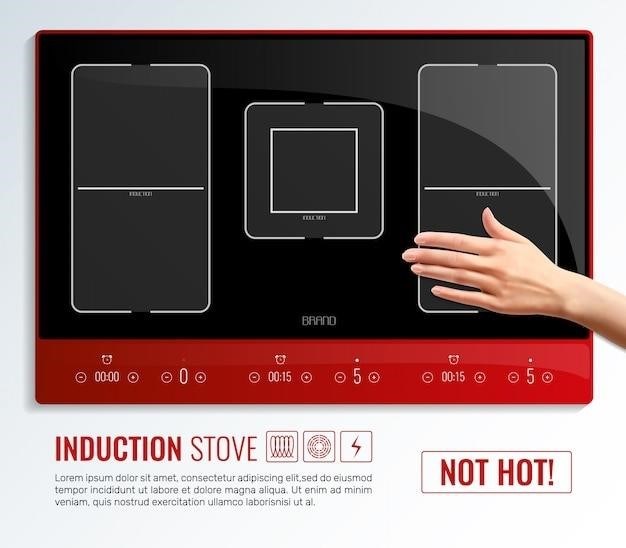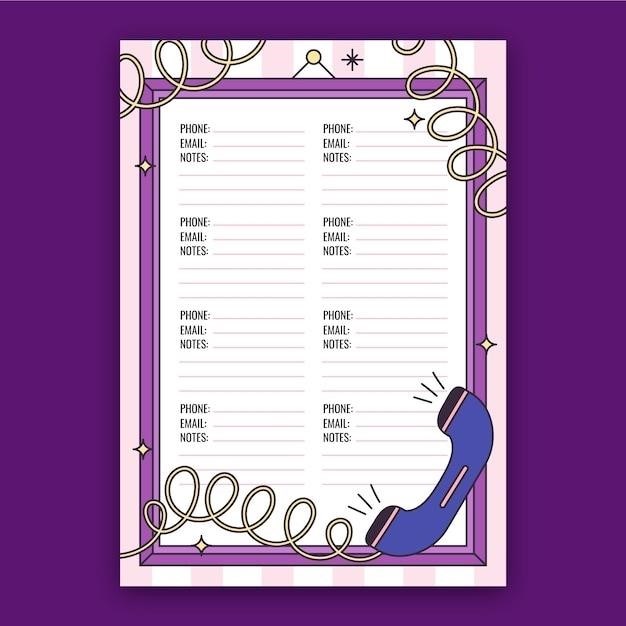Pharmacology⁚ A Patient-Centered Nursing Process Approach (11th Edition)
This comprehensive textbook provides a thorough and accessible guide to the principles of pharmacology and drug dosage calculation. It emphasizes a patient-centered nursing process approach‚ making it easy for students to learn and apply the material in real-world settings. The 11th edition includes updated information on new drugs‚ drug interactions‚ and patient safety. You can download the 11th edition in ePub and PDF format. The ISBN numbers for the book are 0323719350 and 9780323793155.

Introduction to Pharmacology
This section lays the foundation for understanding the fundamental principles of pharmacology‚ setting the stage for a comprehensive exploration of drug therapy. The 11th edition delves into the history of pharmacology‚ tracing its evolution from ancient remedies to modern scientific advancements. It emphasizes the role of pharmacology in healthcare‚ highlighting its importance in promoting patient well-being. The chapter introduces key concepts like drug nomenclature‚ classifications‚ sources‚ and actions‚ providing a framework for understanding the diverse world of medications.
A key focus is on the patient-centered approach‚ emphasizing the importance of considering individual factors such as age‚ gender‚ genetics‚ and concurrent conditions when administering medications. This section also explores the ethical considerations surrounding drug development and use‚ underscoring the responsibility of healthcare professionals to ensure safe and effective treatment.
The introduction to pharmacology also delves into the evolving landscape of drug discovery and development‚ highlighting the complex and rigorous process involved in bringing new medications to market. It examines the roles of preclinical studies‚ clinical trials‚ and regulatory approval‚ shedding light on the scientific and ethical considerations involved in the drug development pipeline.
Drug Development and Ethical Considerations
This section delves into the complex and multifaceted process of drug development‚ outlining the ethical considerations that guide this crucial endeavor. The chapter explores the stages of drug development‚ from initial discovery and preclinical research to clinical trials and regulatory approval. It highlights the importance of rigorous scientific methodology‚ ensuring the safety and efficacy of new medications before they reach patients.
The ethical considerations surrounding drug development are examined in depth. The 11th edition discusses the ethical principles that underpin the research process‚ including informed consent‚ patient confidentiality‚ and the protection of vulnerable populations. It emphasizes the importance of balancing the potential benefits of new drugs with the risks involved in their development and use.
The chapter also delves into the ethical dilemmas associated with drug pricing‚ access‚ and distribution. It explores the challenges of ensuring equitable access to essential medications‚ particularly for underserved populations. The ethical implications of drug repurposing‚ off-label use‚ and the use of placebo controls in clinical trials are also critically examined.
Pharmacokinetics and Pharmacodynamics
This section delves into the fundamental principles of pharmacokinetics and pharmacodynamics‚ providing a comprehensive understanding of how drugs move through the body and exert their therapeutic effects. The 11th edition explores the four main pharmacokinetic processes⁚ absorption‚ distribution‚ metabolism‚ and excretion. It explains how these processes influence drug concentration in the body‚ determining the onset‚ duration‚ and intensity of drug action.
The chapter explores the factors that can affect pharmacokinetics‚ including patient age‚ weight‚ gender‚ genetics‚ and disease states. It also examines the various routes of drug administration and their impact on drug absorption and bioavailability. The concepts of drug half-life‚ steady-state concentration‚ and volume of distribution are discussed in detail‚ providing a framework for understanding drug dosage and timing.
Pharmacodynamics‚ the study of drug action on the body‚ is also explored in depth. The chapter explains the mechanisms of drug action‚ including receptor binding‚ enzyme inhibition‚ and other cellular processes. It delves into the concepts of drug efficacy‚ potency‚ and therapeutic index‚ providing a foundation for understanding drug effectiveness and safety.
Pharmacotherapeutics
This section focuses on the application of pharmacological principles to the treatment of specific diseases and conditions. The 11th edition explores various therapeutic drug classes‚ providing a comprehensive overview of their mechanisms of action‚ indications‚ contraindications‚ adverse effects‚ and nursing implications. It emphasizes the importance of patient-centered care‚ highlighting the need to consider individual factors such as age‚ gender‚ genetics‚ and comorbidities when selecting and administering medications.

The chapter explores the principles of rational drug therapy‚ including the importance of selecting the appropriate drug for the patient’s condition‚ considering the patient’s individual needs and preferences‚ and ensuring safe and effective drug administration. It also discusses the role of the nurse in monitoring drug therapy‚ identifying and managing adverse effects‚ and educating patients about their medications.
The chapter provides a detailed overview of key therapeutic drug classes‚ including analgesics‚ anti-inflammatories‚ antibiotics‚ cardiovascular drugs‚ psychotropic medications‚ and others. It explores the specific properties of each class‚ highlighting their unique mechanisms of action‚ clinical applications‚ and associated risks and benefits.
Drug Administration and Monitoring
This section delves into the crucial aspects of drug administration and monitoring‚ emphasizing the nurse’s vital role in ensuring safe and effective medication delivery. The 11th edition provides a comprehensive guide to various administration routes‚ including oral‚ intravenous‚ intramuscular‚ subcutaneous‚ topical‚ and inhalation‚ highlighting the advantages‚ disadvantages‚ and specific considerations for each method. It emphasizes the importance of proper technique and adherence to established safety protocols to minimize the risk of errors and adverse events.
The chapter also explores the essential principles of drug monitoring‚ including the assessment of patient responses to medication‚ the recognition of potential adverse effects‚ and the implementation of necessary interventions to mitigate risks. It emphasizes the importance of ongoing communication between the nurse and the patient‚ as well as the collaborative role of the nurse in working with other healthcare professionals to ensure optimal drug therapy outcomes.
Furthermore‚ the chapter discusses the importance of documenting drug administration and monitoring activities accurately and comprehensively. This includes recording the medication’s name‚ dose‚ route‚ time of administration‚ and any relevant observations regarding the patient’s response to the medication. Proper documentation is crucial for maintaining patient safety‚ promoting effective communication among healthcare professionals‚ and facilitating medication reconciliation across care settings.
Patient Education and Medication Safety
This section underscores the critical role of patient education in promoting medication safety and empowering patients to actively participate in their own healthcare. The 11th edition emphasizes the importance of providing patients with clear‚ concise‚ and culturally sensitive information about their medications‚ including their intended purpose‚ potential side effects‚ and instructions for proper administration and storage. It advocates for the use of patient-friendly language and visual aids to facilitate comprehension and retention of information.
The chapter also addresses the importance of assessing patient understanding and addressing any questions or concerns they may have. It emphasizes the need for nurses to tailor their educational approach to the individual patient’s needs and learning style‚ taking into account factors such as age‚ literacy level‚ and cultural background. The 11th edition highlights the significance of fostering a collaborative and supportive environment where patients feel comfortable asking questions and expressing their concerns.
Furthermore‚ the chapter discusses strategies for enhancing medication safety‚ including the importance of medication reconciliation‚ medication adherence‚ and the identification and reporting of medication errors. It provides practical tips for nurses to implement these strategies effectively‚ including the use of medication reminder systems‚ the development of personalized medication schedules‚ and the provision of ongoing support and monitoring to ensure patient adherence to prescribed regimens.
Legal‚ Ethical‚ and Professional Considerations
This section delves into the complex legal‚ ethical‚ and professional considerations that nurses encounter when administering medications. It explores the legal framework governing medication administration‚ including the Nurse Practice Act and other relevant state and federal regulations. The 11th edition emphasizes the importance of nurses adhering to these regulations to ensure safe and responsible medication practices.
The chapter also examines the ethical principles that guide medication administration‚ such as beneficence‚ non-maleficence‚ autonomy‚ and justice. It discusses the ethical dilemmas that nurses may encounter‚ such as respecting patient autonomy while ensuring their safety‚ and the importance of advocating for patients’ rights and interests. The 11th edition highlights the need for nurses to develop critical thinking skills and ethical reasoning abilities to navigate these complex situations.
Furthermore‚ the chapter explores the professional standards of practice that govern medication administration‚ including the American Nurses Association (ANA) Code of Ethics for Nurses and other relevant professional guidelines. It emphasizes the importance of nurses maintaining professional competence‚ practicing within the scope of their license‚ and upholding the highest ethical standards in their practice. The 11th edition encourages nurses to engage in ongoing professional development and seek mentorship to enhance their knowledge and skills in medication administration.
Drug Interactions and Adverse Effects
This section focuses on the potential for drug interactions and adverse effects‚ which are critical considerations in medication administration. The 11th edition provides a comprehensive overview of the various types of drug interactions‚ including pharmacokinetic and pharmacodynamic interactions‚ and their impact on drug efficacy and safety. It explores the mechanisms underlying these interactions‚ such as altered absorption‚ metabolism‚ or excretion of drugs‚ and the potential for synergistic‚ antagonistic‚ or additive effects.
The chapter also delves into the diverse range of adverse effects that medications can cause‚ from mild side effects to serious and life-threatening reactions. It emphasizes the importance of nurses being vigilant in monitoring patients for signs and symptoms of adverse effects‚ including allergic reactions‚ idiosyncratic responses‚ and toxicities. The 11th edition provides guidance on recognizing and managing these adverse effects‚ including strategies for preventing and minimizing their occurrence.
Furthermore‚ the chapter explores the role of pharmacogenetics in individualizing medication therapy to minimize the risk of adverse effects. It discusses how genetic variations can influence drug metabolism and response‚ leading to varying sensitivities among patients. The 11th edition highlights the need for nurses to be aware of the potential for pharmacogenetic interactions and the importance of considering patient-specific factors in medication selection and dosage adjustment.
Nursing Process in Pharmacology
This section is a cornerstone of the book‚ emphasizing the application of the nursing process to safe and effective pharmacotherapy. It outlines the five phases of the nursing process⁚ assessment‚ diagnosis‚ planning‚ implementation‚ and evaluation‚ and their relevance to medication administration. The 11th edition provides detailed guidance on how to conduct a thorough medication-related assessment‚ identifying factors that may influence drug therapy‚ such as patient history‚ allergies‚ current medications‚ and physiological status.
The chapter explores the development of nursing diagnoses related to medication administration‚ highlighting the importance of identifying potential problems associated with drug therapy‚ such as noncompliance‚ adverse effects‚ and knowledge deficits. It emphasizes the need for nurses to collaborate with other healthcare professionals to develop individualized care plans that address the patient’s specific needs. The 11th edition provides a comprehensive overview of the nursing interventions related to medication administration‚ including safe drug preparation‚ administration routes‚ monitoring for therapeutic and adverse effects‚ and patient education.
The chapter concludes with a discussion on the importance of evaluating the effectiveness of drug therapy. It provides guidance on how to assess patient outcomes‚ monitor for changes in drug response‚ and adjust treatment plans as needed. The 11th edition emphasizes the critical role of nurses in ensuring patient safety and optimal therapeutic outcomes through the application of the nursing process to pharmacotherapy.
Resources and References
The 11th edition of “Pharmacology⁚ A Patient-Centered Nursing Process Approach” provides a robust set of resources to support student learning and professional practice. The book incorporates a variety of learning aids‚ including case studies‚ critical thinking exercises‚ and drug tables. Each chapter also features a comprehensive list of references‚ allowing readers to delve deeper into specific topics of interest. The book’s website‚ accessible through the publisher’s platform‚ offers additional resources such as interactive quizzes‚ drug information databases‚ and access to current drug updates.
The authors encourage students and nurses to utilize reputable online resources and professional organizations for ongoing learning and professional development. The 11th edition includes a list of recommended websites‚ such as the National Institutes of Health‚ the Food and Drug Administration‚ and the American Nurses Association‚ providing access to evidence-based information and clinical guidelines. The book also encourages readers to join professional organizations such as the American Pharmacists Association‚ the American Society of Health-System Pharmacists‚ and the American Nurses Association‚ to stay abreast of the latest developments in the field and engage in professional networking.
The 11th edition emphasizes the importance of lifelong learning in the field of pharmacology. It encourages nurses to actively seek out new information‚ participate in professional development activities‚ and engage in ongoing critical reflection to enhance their knowledge and skills in medication administration and patient care.



























